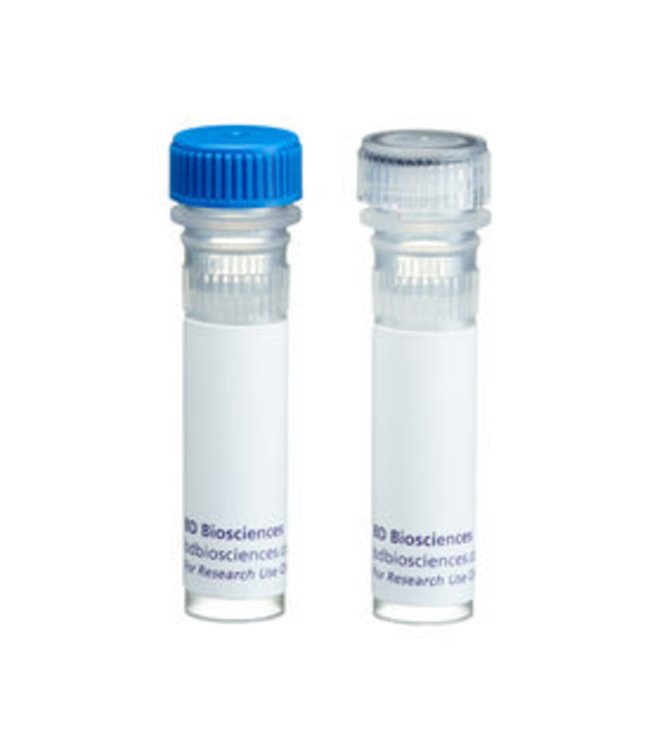CD247 with control Mouse anti-Human, Unlabeled, Clone: 8D3, BD, Mouse Monoclonal Antibody, Each

Details:
The T-cell receptor (TCR), expressed by thymus-derived lymphocytes, is a multi-component complex responsible for recognizing antigen in the context of MHC molecules. Ti is the antigen-specific binding component of the TCR. On the majority of peripheral T lymphocytes Ti is present as a disulfide-linked α - β heterodimer. A minor fraction express Ti as a γ- δ heterodimer. The Ti subunits are Ig-like, each containing V and C regions. Ti is noncovalently associated with an invariant set of molecules referred to as the CD3 subunits. CD3 appears early in thymocyte differentiation and remains expressed on all mature T lymphocytes. In the mouse, it consists of five chains, γ(gamma), δ (delta), ε (epsilon), ζ (zeta), and p21. The relative masses of the mouse CD3 chains are 21, 28, 26, 32 (dimer), and 21 kDa respectively. The 8D3 antibody recognizes the ζ chain of the human and mouse T cell antigen receptor-associated CD3 complex. It reacts with 16 kDa unphosphorylated monomers and 32 kDa unphosphorylated dimers. It does not appear to recognize 21 kDa phosphorylated monomers or 42 kDa phosphorylated dimers. A synthetic peptide corresponding to a region of human CD3 ζ was used as immunogen.
Additional Information
| SKU | 10133209 |
|---|---|
| UOM | Each |
| UNSPSC | 12352200 |
| Manufacturer Part Number | 551033 |

